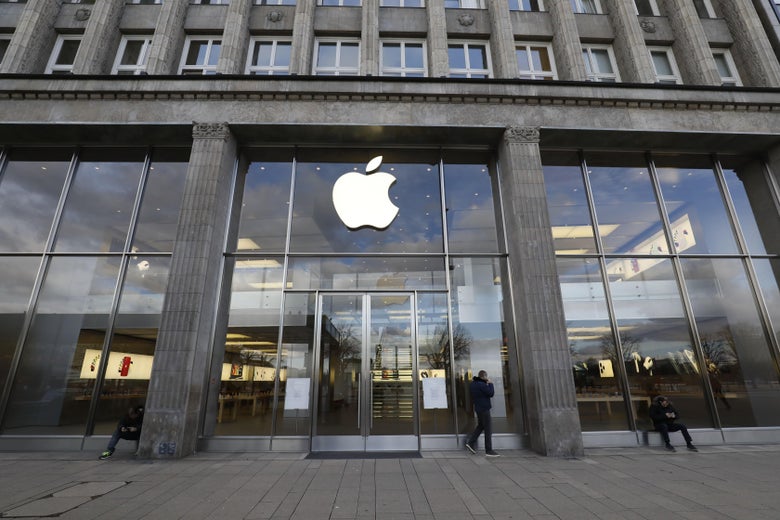
Do not enter.
MORRIS MAC MATZEN/Getty Images
Apple is expected to start taking orders for its new 4.7-inch iPhone SE as soon as Friday—a stunningly normal development considering there’s a global pandemic, most Apple Stores are shuttered, and the nose-diving economy would deter most companies from even dreaming of rolling out a new product right now.
The device is a follow-up to the 2016 iPhone SE, a smaller budget option that was well-received at the time. Whereas the 2016 iPhone SE fit the processing power and capabilities of the iPhone 6 into the body of an iPhone 5, the 2020 iPhone SE will essentially have the body of an iPhone 8 and the features of an iPhone 11, such as an A13 processor. The phone will come in white, black, and red, and have 64 GB, 128 GB, and 256 GB memory options. Early reports suggest that the new phone will cost $399. It is unclear when the products will ship.
Several tech blogs learned that the iPhone SE’s release was imminent after the listing for the Belkin Invisiglass Ultra Screen Protection in the Apple Store accidentally listed its size as being for the “iPhone SE/8/7.” Apple subsequently removed references to the iPhone SE from the listing.
Rumors had been floating around for a while that Apple would release a more affordable iPhone in March, though the onset of the coronavirus made those rough projections even more uncertain. The Chinese factories that make up of the backbone of the company’s supply chain had reportedly been operating at 30 to 50 percent capacity due to labor shortages and transportation hurdles that resulted from the country’s quarantine measures. The hiring of seasonal workers at the factories was also a challenge due to travel restrictions, and attempts to ensure that plants did not become new infection sites led many of them to temporarily shut down. However, production was slowly picking up again in major manufacturing sites in Zhengzhou and Shanghai toward the end of February.
A cheaper device may indicate that Apple is trying to court a broader array of customers as sales for increasingly expensive smartphones have declined—certainly, with millions of layoffs across the globe, fewer people will want to shell out $700 to $1000 for a top-of-the-line iPhone the next time they need a new device. Nonetheless, this phone comes at a time when the company has had to cut its quarterly revenue guidance, largely due to depressed supply and demand in China. Apple closed all its stores in Greater China on Feb. 2 and in all other countries on March 14, a couple days after the World Health Organization designated COVID-19 as a pandemic. While the company began resuming operations at its China stores in mid-March, it decided to extend its closures in the U.S. and other countries beyond the initial March 27 reopening date. For once, when a new Apple phone rolls out, there won’t be a line in sight.
Readers like you make our work possible. Help us continue to provide the reporting, commentary and criticism you won’t find anywhere else.
Join Slate Plusfrom Slate Magazine https://ift.tt/2X61qyf
via IFTTT
沒有留言:
張貼留言